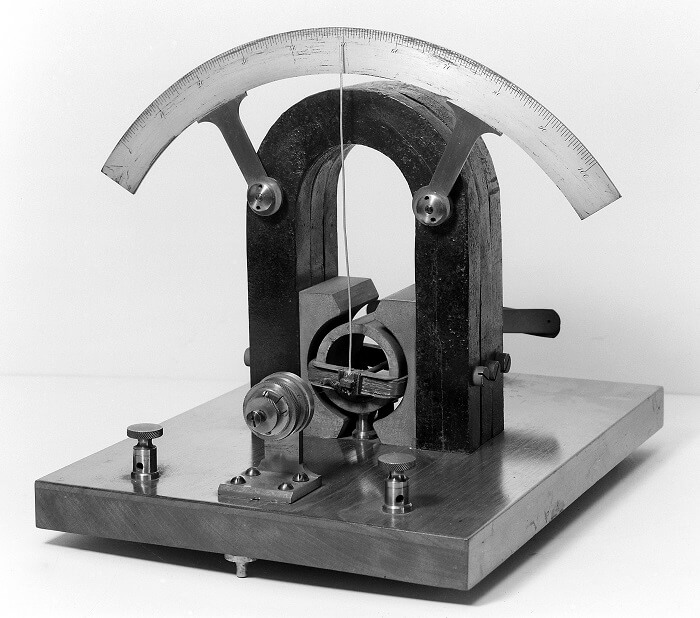What is galvanometer? How does it work? Who invented the galvanometer? Information about galvanometers.
Galvanometer; An instrument used to detect an electric current is called a galvanometer. It can be used to measure the strength of the current, although in everyday work that is done with an ammeter and the galvanometer is generally a more delicate instrument used with fairly small currents. The instrument was given its name in honour of the Italian Luigi Galvani, one of the early workers on electricity.

Source : wikipedia.org
In 1820 the Danish scientist H. C. Oersted found that a wire carrying an electric current would make the needle of a magnetic compass near it point in another direction. A galvanometer may be made in this way, using a coil of wire surrounding a pivoted magnetic needle. When an electric current is passed through the coil, the angle the needle turns through is a measure of the strength of the current—the greater the current the greater the angle through which the needle turns.
Other galvanometers have a coil of wire which is pivoted between the poles (or two ends) of a powerful horseshoe magnet. When a current is passed through the coil it becomes a magnet and tries to turn itself into line with the poles of the horseshoe magnet. The coil may carry a pointer which moves over a scale to show the size of the current, or it may carry a small mirror arranged to reflect a beam of light onto a scale fixed some distance away. The beam of light moves quite a long way for a very small movement of the coil, and such a galvanometer can therefore detect tiny currents.